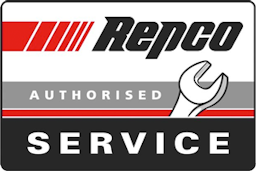Do you know how to check your car?
Here at Derek Steen's Auto Care, we would be more than happy to show you how to give your car a once over to make sure it is running safely and efficiently. Check out some of our tips!
How to check your oil
After consulting the owner's manual to follow the manufacturer's instructions, check to see if your car is equipped with an electronic oil monitor. If it does not have a traditional dipstick, move on to the next step.
Before checking the oil level, make sure the car is parked on level ground and that the engine is either cold (for most vehicles) or warm (if the automaker's directions specify so).
Once the engine is in the desired state, open the hood and locate the dipstick. Pull it out, clean off any oil on its end, and then re-insert it into its tube, pushing it all the way in.
Remove the dipstick again and examine the oil level on both sides. Many dipsticks are marked with two pinholes, letters 'L' and 'H' (representing 'low' and 'high'), abbreviations MIN and MAX, or an area with crisscrossing lines. If the top of the oil streak is between the two indicators or in the crosshatched area, the oil level is appropriate. In case the oil is lower than the lowest marker, it is necessary to top up.
Carefully examine the color of the oil - it should be either brown or black. However, if it appears to be milky, this may signify a coolant leak into the engine. Further inspection should be done to check for any metal particles that could point to internal engine damage. If either of these conditions are present, bring the car to Derek Steen's Auto Care for a proper diagnosis. To ensure your car is running smoothly, give the dipstick another clean and firmly seat it back into its tube before closing the hood.
How to check your coolant levels
It is important to make sure your engine is cooled off before beginning to inspect your car's cooling system. Wait at least a few hours after driving to remove the radiator cap, otherwise you may get sprayed with hot coolant and suffer from burns. You may find it useful to look in your owner's manual for more detailed instructions.
The plastic overflow bottle connected to the cooling system will usually have low and high marks which will indicate if the engine has the correct amount of coolant. You will want the level to be somewhere between the two marks. The overflow bottle is connected to the radiator, usually with a brightly colored cap, and can be found at the front of the car.
Lift the car's hood, ensuring it is properly secured, and then locate the coolant reservoir. Make sure that the water level is in between the minimum and maximum levels. If the level is too low, look in the owner's manual to find out the type of coolant that is needed for your vehicle, as well as the proper method for topping off the level.
How to check brake fluid
On the driver's side of the engine bay, the brake fluid reservoir is usually visible with a transparent casing and two distinct level markers - one for the low level, and one for the high level.
In order to ensure the brake fluid is sufficient, simply observe the current level and fill the reservoir to the appropriate level with the recommended fluid, if it is below the low marker.
How to check power steering fluid
Checking your power steering is straightforward: open the reservoir and assess the fluid level. Many caps come equipped with a dipstick, which makes it a cinch.
Note that the level is prone to shifting in relation to the car's temperature, and the indicator usually reveals a COLD or HOT range to guide you. Should the fluid be low, replenish it with the specified type.
Should you require any additional assistance, please feel free to consult the team at Derek Steen's Auto Care.
How to check water levels
Assessing the water levels in your car is an effortless task, yet it's vital to inspect the levels only when the engine is cold. To start, open the hood and ensure that it's locked. Then, identify the coolant tank and confirm that the water amount is between the maximum and minimum levels. If not, add the required quantity.
If it's challenging to spot the tank, you can look up your vehicle manual or consult a professional for help. If you would rather have an expert examine the water levels, please drop by our Castlemaine shop or book an appointment online now.
How to check your tyres
Assessing the tread depth of your tyres is a breeze, requiring nothing more than a 20c piece. Place an Australian 20c coin into one of the central channels of the tyre to get a quick read on its tread depth. If the tread doesn't meet the top of the platypus' head, your tyre has a tread depth of less than 3mm. It's imperative that you purchase new tyres for safe driving.
As the tread on your tyres wears down, they are less able to effectively disperse water. When the roads are wet, older tyres will cause your vehicle to take a longer time to come to a halt. Legally, you must change your tyres once the tread depth falls below 1.6mm, yet it is recommended that you maintain a tread depth of at least 3mm to guarantee tyre performance is not diminished in wet conditions.
How to check your windscreen wipers
When working correctly, your windshield wipers should remove rain from the glass with no water streaks. However, streaks are left when the blade does not touch the surface. Damage can come from chips of the road hitting the blades, as well as from general wear and tear.
Over time, the blades can deform and not fit snugly against the windshield. To prevent this, examine the wiper blades for any sign of damage, misalignment, or deformation; if you notice any of these, it's time for a new set.
Keeping on top of your services and checking your vehicle regularly helps prevent possible issues in the future.
If you're still a little unsure, come in and speak with Derek and the team! They would be happy to help you 😊


